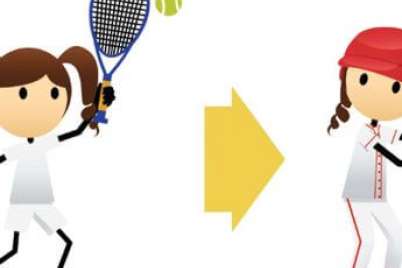
Throwing: How to teach kids to throw correctly
Throwing is fundamental to a multitude of sports and activities. If kids can throw reasonably well, they can participate in everything from frisbee and football to baseball and bocce. As this funny KidSport video shows, knowing how to throw could even save someone’s life.
Like most skills, throwing is not something kids are simply “born good at.” They have to learn, and play that provides plenty of repetitions is the best teacher. At the outset, a little instruction in basic technique helps, too.
Basic mechanics of overhand throwing
There are different ways of throwing depending on whether you are throwing a baseball, a discus, a frisbee, a javelin, a basketball, or even a ball of yarn. You can throw gently or hard, and you can throw underhand, overhand, or sidearm. However, when most people think of throwing, the image that comes to mind is probably a basic overhand throw.
With that in mind, here are the basic elements of correct overhand throwing technique:
- Stand straight upright, ball in your throwing hand, facing your target.
- If you are throwing with your right hand, turn sideways 90 degrees to your right (reposition your feet so you are standing sideways to your target).
- If you are throwing with your left hand, turn sideways 90 degrees to your left (reposition your feet so you are standing sideways to your target).
- Make sure your feet are shoulder-width apart.
- Lift your non-throwing arm to “point” at your target and shift your weight to your back foot.
- Lift your throwing hand so the ball is near your ear (right ear if you are throwing with your right hand, left ear if you are throwing with your left hand).
- You are ready to throw.
- In one motion, shift your weight to your front foot, drop your pointing arm, and twist your torso as you bring your throwing arm over your shoulder to release the ball at your target.
How to teach kids the basics
It may not appear complicated, but throwing requires a tremendous amount of muscle coordination, especially step (8) above. Until about age five or six years, most kids’ bodies are simply not developmentally ready to sequence all the movements described above, so their throwing may look pretty awkward. If this is what you see with your child, don’t worry about it.
If you are trying to teach a toddler or preschooler to throw, the best approach is simply to play a lot of throwing games with them and refrain from offering instruction. This will allow them to explore the basics of throwing as they slowly develop their muscle coordination over time.
Around age six or seven years, you can realistically start to offer some basic throwing instruction to your child. Still, beyond offering some basic guidance, refrain from providing too much additional “correction” of technique. Most kids will naturally improve their throwing technique as they accumulate repetitions. The most important thing is to keep it fun – find fun games that involve a lot of throwing, and then simply play, play, and play.
Two games for practicing overhand throwing
To get young kids started with overhand throwing, you can set up a cardboard box on its side against a wall as a target. Make a few balls out of socks and challenge your child to practice throwing with you into the box from various distances. The beauty of sock balls is that you aren’t going to break any windows or hurt anyone with an errant throw.
If you think a little friendly competition will enhance your child’s interest, keep score – one point for every throw that goes in the box.
Feeling confident? Try progressing to baseball throwing and catching together with baseball gloves. Depending on the age of your child, you might want to use a sock ball or soft foam ball instead of an actual baseball. You don’t even need gloves if you are using a foam ball or a sock ball.
Congratulations! You have opened the door to a new world of physical activity for your child. From simply playing catch to pitching a fastball, the basic skill of throwing provides the starting point for countless fun games and activities.






For me I grabbed a piece of chalk and drew a box that was about shoulder with and size of the torso. Told him if he can hit that box every time fro. Various distances and angles. You will have the ball in the vicinity of your team mate to make a play.
Make it a habit to warm up before practicing. This is important because it helps to loosen up your tight muscles for flexibility and efficiency and progressively raises your heart rate in a way that doesn’t cause too much stress.
Great point. Thank you for the comment!
its ok
Thank you 😊😊 good skills
Thanks for telling me this, I needed this.
Ok thank you
And u would never help me pass if it wasn’t for u
this is ligit shotput
I love the whole Active for life site. I use it all the time in my classes. It has taught me skills I didn’t even know and super tips.
I learned a great cue to help kids get into the proper body position for an overhand throw. I’ve used it with success in teaching elementary school PE classes with kids 4 to 12 years old, and in coaching T-ball with kids 3 to 6 years old. I remind them to “jump onto your skateboard” just before throwing. This places their opposite leg forward, side to their target, and maybe even throwing arm up and back!
Hi Ian,
Great tip — these sorts of cues are excellent for giving kids a picture of what they should be doing. Cheers, Jim
Thanks for the tip. Going to try this with my k students.